June 30, 2017
Air Date: June 30, 2017
FULL SHOW
SEGMENTS
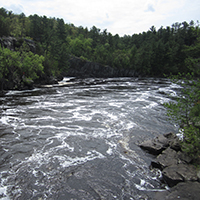
Enviro Win at Supreme Court
View the page for this story
The US Supreme Court by 5-3 upheld rules that strengthen government powers to regulate private property for environmental reasons. Harvard Law Professor Richard Lazarus, one of the litigators on the winning side of this Wisconsin case, and Living on Earth Host Steve Curwood discuss this decision and how it could also influence land use rules in the future as the planet warms. (12:16)

Beyond The Headlines
/ Peter DykstraView the page for this story
This week Peter Dykstra and host Steve Curwood go Beyond the Headlines to note how cold drinks incur a lot of waste and pollution from plastic straws. Also, a quarter of UK rivers and streams are at risk of drying up due to rising temperatures, droughts and leaky pipes, Dykstra says, and with toxic algae in Lake Erie as an example he notes how journalistic warnings are often ignored. (02:39)

Airlines Embrace Carbon Fee
View the page for this story
America’s air carriers have signed on to an international agreement for carbon offsets and reduction, arguing it will prevent unilateral charges on their emissions at foreign airports. But the Trump administration, after pulling out of the Paris Agreement, is reviewing that decision despite vocal support for it from US airlines. Nancy Young, the VP for Environmental Affairs with the trade group Airlines for America joins host Steve Curwood to explain what is at stake for the industry. (07:17)

Dikes, Floods and Adaptation
View the page for this story
Much of the Netherlands is below sea level, and it has had to deal with a major flood every generation for a thousand years or more. Now, the Dutch are leading the way in water management engineering in a warming world of increased rainfall and sea level rise. Chris Zevenbergen, Professor of Flood Resilience of Urban Systems in Delft, Holland, talks with host Steve Curwood about how the Dutch are adapting to the reality of floods, storm surges and torrential rains and the lessons other vulnerable nations can learn. (07:08)
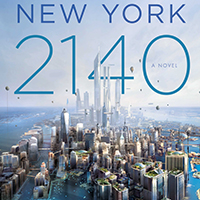
New York 2140
View the page for this story
Melting ice sheets, and wild storms have added 50 feet to sea level and submerged coastal areas in award winning science fiction writer Kim Stanley Robinson’s latest novel, New York 2140. Yet the city is still a vibrant hub of global capital, with express boats zooming up the avenues and sky bridges linking the skyscrapers that still stand. Living on Earth’s Helen Palmer and the author discuss his twenty-second century vision and how the disaster of a “50 Katrina” hurricane hitting the Big Apple upends the economic order and creates a more equitable, environmentally aware society. (15:10)

BirdNote: The Ruby-throated Hummingbird
/ Michael SteinView the page for this story
Birdnote’s Michael Stein explains why the Ruby-throated Hummingbird fascinated John James Audubon, and the rather sneaky way he acquired specimens to paint. (02:03)
Show Credits and Funders
Show Transcript
HOST: Steve Curwood
GUESTS: Richard Lazarus, Nancy Young, Kim Stanley Robinson
REPORTERS: Peter Dykstra, Michael Stein
[THEME]
CURWOOD: From Public Radio International, this is Living on Earth.
[THEME]
CURWOOD: I’m Steve Curwood. A landmark case before the Supreme Court affirms the Government’s right to regulate land development, even if it takes away some value.
LAZARUS: My view of this case is this was not actually a regulatory takings case -- this was a regulatory givings case. And the facts of this case show how real economic value can be created by sound environmental protection management. And I think the court got that.
CURWOOD: Also, even as President Trump is pulling out of the Paris Climate Agreement, America’s airlines are sticking with an international deal to pay for their carbon pollution.
YOUNG: If we didn't have a global agreement for aviation and climate change, when we fly from country to country, they could basically tax and charge us to death. That should speak to this administration as a reason to go forward with this agreement.
CURWOOD: That and more, this week on Living on Earth. Stick Around.
[NEWSBREAK MUSIC: Boards Of Canada “Zoetrope” from “In A Beautiful Place Out In The Country” (Warp Records 2000)]
[THEME]
Enviro Win at Supreme Court
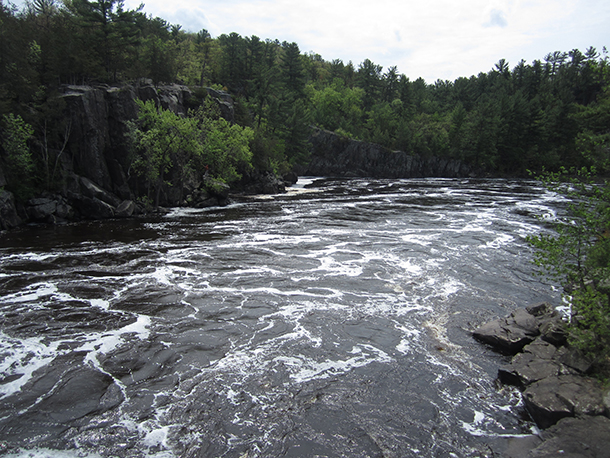
The Murr Family property has waterfront along the St. Croix River in Wisconsin, part of the Wild and Scenic Rivers System. (Photo: Ann, Flickr CC BY 2.0)
CURWOOD: From PRI and the Jennifer and Ted Stanley Studios at the University of Massachusetts Boston, this is Living on Earth. I’m Steve Curwood. Environmental regulators and advocates have won a landmark case in front of the Supreme Court of the United States regarding property rights.
The Murr family sued Saint Croix County in Wisconsin in 2013 when regulators refused to issue building permits for two homes along the wild and scenic St. Croix River, which runs through state and national parks. The property was originally purchased in 1963 as two tiny lots, but only one dwelling was ever built, and the county said it was now one small lot. Zoning regulations now designed to protect river ecology prohibited a second home on a single lot, a rule the family said amounted to the taking of some of the value of their property, and thus a violation of property rights.
But the Supreme Court said no, and joining us to discuss the decision is Professor Richard Lazarus of Harvard Law School, who was on the winning side as a lawyer for St. Croix County. Welcome to Living on Earth Professor!
LAZARUS: Delighted to be here.
CURWOOD:First, just explain to us why environmental activists are so concerned about this issue and why they were so happy about the ruling in this case?
LAZARUS: Well, the regulatory takings issue is very important to environmental activists because it's been often used in litigation to challenge environmental restrictions on land use. It's a way to put a brake on these very important restrictions which we've enjoyed in our country now for several decades,
CURWOOD: And just inform us, Professor, what is the takings clause in the United States Constitution? How does it get used in cases like this?
LAZARUS: The Fifth Amendment of the Constitution provides no private property should be taken for public use without just compensation. Most people have fought for centuries that that provision only applied when the government physically took your property, but in 1922, a decision written by no less than Oliver Wendell Holmes, with Louis Brandeis dissenting, the court announced a new constitutional doctrine, and that was one that said that if the government regulates your property to such an extent there's no value left of it, that amounts to a regulatory taking of your property, for which the government has to provide just compensation.
It is actually a doctrine which lay dormant for decades until after the modern environmental law movement of 1970s. When the environmental law movement of the ‘70s passed laws like the Clean Air Act, the Clean Water Act, Endangered Species Act, they started to impose certain restrictions on private individuals use of their land because it basically - Their private use would cause water pollution, air pollution, destroy the habitat of species.
CURWOOD: So, cases have been brought by folks opposed to those regulations saying that they lose partial value of their land, and the government needs to pay them for that. So, there is a spotted owl out on their territory, they can't cut down the tree that they should get paid. They do lose value. I mean, how good is this argument?
LAZARUS: The court said in 1922 was the regulation goes too far. When the economic impact is unduly burdensome that's when there will be a taking. So, it's the question of degree. The environmental restrictions almost never say you can't do anything with any part of your land. What they say is, you can't do something with your most environmentally fragile, sensitive part of your land. So, the question is, how do you measure to what extent the economic impact is? Do you look to the whole parcel, all that they own, or do you just focus on the part of the land which is most restricted by the environmental protection regulation? And that is a big deal when it comes to whether or not people win or lose these takings cases.
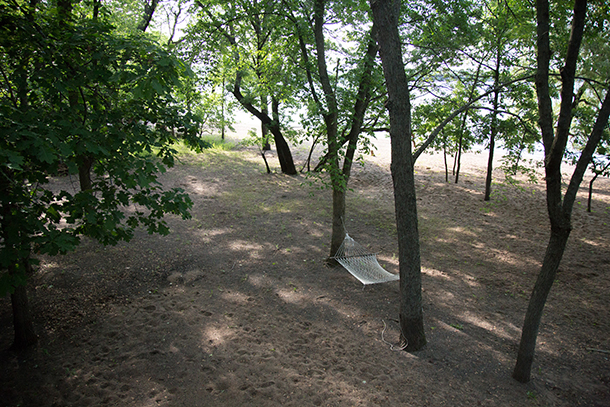
A view of the lower half of the Murrs’ riverfront property in Wisconsin. (Photo: PacificLegalFoundation, Flickr CC BY-NC 2.0)
CURWOOD: I gather in the case that you just won in front of the Supreme Court, this was a key issue whether you look at the whole parcel or you look at the piece that you lost. Of course, if I'm the cranky landowner who can't put up a beach house because in the wetlands I'm feeling like I lost all the value of that lot. I was banking on that.
LAZARUS: Absolutely, that's why a lot of very disappointed people in this area. I think the environmentalists respond with say, you don't have a right to build in a wetland, you don't have a right to build in a floodplain, but don't have a right to destroy something which will have a significant adverse impact on other people and on future generations, and that's where the balance comes in. We have to look on the one hand on the degree to which they've been disappointed and whether expectations that they could build are reasonable or not.
CURWOOD: Talk to me about, briefly about the details of this case that you won and what each side was claiming.
LAZARUS: Basically, in this case we had a family, a series of children from the Murr family. Their parents had given them in the 1990s, given two parcels of land right next to each other along a beautiful, the St. Croix River, and the parents have built a small studio, sort of a summer recreational cabin on one of the two parcels, and the Murr children had inherited that from their parents. And they...What they wanted to do was build a house on each parcel. If two different families had owned those two different lots, they could've built a house on each lot even though it would have caused some environmental harm because the government in its grace basically says, “That's too harsh an impact to not let you building anything at all.”
But in this case, the Murrs own both lots, and what government says, in St. Croix County and in counties across the United States for more than 60 years, that if you own two adjoining lots, you're not suffering such a great economic impact because you can still build a house on one lot. We can effectively merge your two lots together. The Murrs said, “That's not fair. We should be able to build a house on each.” The government said, “No, this is perfectly fair. You've had your property diminished in value, but you've not been wiped out. If you haven't been wiped out, it's not a taking.” This is part of the benefits and burdens of living in a civilized society and in having these kinds of environmental restrictions.
CURWOOD: There's a broad conception, Professor, that environmental land use laws reduce property values. When is this true, and when is that not true, and what does this case say in particular about that?
LAZARUS: Environmental protection restrictions are often accused of only eliminating economic value because in the past the court, including the US Supreme Court and certainly the private property plaintiff in these cases, have only focused on the extent to which environmental restrictions decrease value. So somebody, for instance, owns property and they would say, “If I could build whatever I want on this property, the property would be worth a million dollars, but you're only letting me build something much less intensive, and it's only worth $700,000; therefore, you destroyed $300,000 of my value.” But the Supreme Court says here in this case is, “That's not a fair measure of the economic impact environmental protection restriction.”
You also have to look to see what would the value of the property be if those restrictions didn't apply to anybody, not just you, but anybody. If that's the case, it might well be the property is only worth $100,000. So, actually, environmental protection restrictions have decreased the full value you have, but they've also increased the value you have.
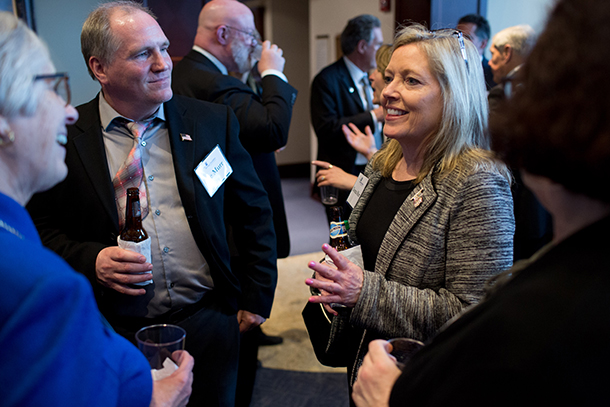
Donna Murr at a Heritage Foundation event after arguing the Murr v. Wisconsin and St. Croix County case at the Supreme Court on March 20, 2017. (Photo: PacificLegalFoundation, Flickr CC BY 2.0)
In this case, you have these two pieces of property. They were long and they were very narrow, and they basically were floodplain on the bottom, right next to each other. They then led to a steep slope. You couldn't walk across it, you couldn't transverse it at all, and the top part had a little bit of buildable land. The reason why these little slips of land, mostly floodplain and mostly steep slope, were worth about $400,000 an acre was because it was right next to the St. Croix River, a wild and scenic river, absolutely gorgeous river, right at the bend of the river, and the government had for the past sixty years protected these fragile ecosystems. Yes, it would be worth a little bit more if you could build two houses, but they had property worth $700,000 of the two lots together. That is why, in my view of this case, this was actually not a regulatory takings case. This was a regulatory givings case. And the facts of this case showed how real economic value can be created by sound environmental protection management, and I think the court got that.
CURWOOD: Talk to me about which justices supported the rulings, who dissented, and why.
LAZARUS: We basically won the case five to three. Justice Gorsuch didn't participate because he wasn't yet on the court. Justice Kennedy wrote the majority opinion for the court. He was joined by Ruth Bader Ginsberg, Justice Breyer, Justice Sotomayor, and Justice Kagan. The Chief Justice wrote the dissent in this case joined by Justice Thomas and Justice Alito.
What's interesting about the dissent by Chief Justice is he actually knowledges that under his test the county would probably win on remand, so, even to that extent, it's not clear that any of the eight justices thought the county should lose in this case. He just had a different legal theory.
CURWOOD: So, how tightly closed is the door against this kind of litigation, if the chief justice didn't go along with the majority here?
LAZARUS: Well, the Supreme Court decides thing by majority vote, so it's a five to three. What the Chief Justice said has some force to it, but it's just that. It's a dissent. Justice Kennedy writes the majority opinion. It's a really sweeping ruling. The more interesting question, and some would say the more sobering question going forward, is, given it was that close and there have been rumors of Justice Kennedy leaving the court, it sort of reinforced the notion there's a lot at stake. If Justice Kennedy leaves the court, and there is a lot at stake, if a new justice is appointed to replace Kennedy. Justice Kennedy has been on the court since the late 1980s, he has been in the majority in every single environmental case since he's joined the court except one. He tends to be the bellwether for the Supreme Court on federal constitutional law. He's done that for decades. He did it again in the Murr case.
CURWOOD: So, when the court agreed to take this case up, Justice Scalia was still there. How did his departure, his loss, affect this decision do you think?
LAZARUS: I think there is every reason to think the case probably would be decided exactly the same. But what I can say is the dynamic before the court was very different absent Justice Scalia. My first argument before the US Supreme Court was in October 1986, it was literally just a few weeks after Justice Scalia joined the court. This is the first time I've argued a case when Justice Scalia wasn't on the bench, and it was a very different court, and it felt different. When I argued cases when Justice Scalia was there, especially a case where I was representing an environmental regulator, like a regulatory takings case, Justice Scalia was all over me, all over me from the first second. If I ever was making and scoring good points, he would interrupt me and try to derail me. If he had been on this bench, it would have been a very different argument. At oral argument, no one was challenging me, the way Justice Scalia used to challenge me. No one was bringing up every possible weak point we had in the case, the way Justice Scalia would have done so. This time, I could make my argument, I could make it in full, the court could hear me, and it was a very different experience.
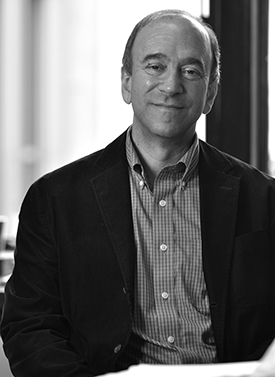
Richard Lazarus is a Professor of Law at Harvard University. (Photo: Courtesy of Harvard Law School)
CURWOOD: So, we're seeing increasingly the effects of global warming, and it’s going to continue to increase. How will this area of the law affect the government response to the challenges of climate change?
LAZARUS: Really in two ways. One way we're going to need more laws to deal with mitigating emissions, to reduce emissions and a lot of those laws reduce emissions will pose restrictions on people who want to use their land in ways that cause air pollution and water pollution. The other way though is that we're going to need climate laws to deal with adaptation. The fact is climate change is going to happen because we’ve not been able to reduce our emissions over the past several decades. That is going to require more land use regulation along the coastlines, in floodplains and wetlands, to try to deal with the adverse effects of having private property development in these increasingly fragile systems along the coastal zones because of climate change. To the extent that we now have a test, a regulatory takings test, which is more sensitive to the need of government to regulate along the coastal zones, that's going to help the government deal with adaptation issues presented by climate change.
CURWOOD: End of the day, this ruling strengthens the position of environmental regulation as compared to before this ruling came along?
LAZARUS: I think it certainly does strengthen it, and that's because in 2003, in the decision called Palazzolo v. Rhode Island, Justice Kennedy, writing for the court, suggested some uncertainty about how you should define the parcel, and he suggested maybe we had to move to a test to redefine the parcel more narrowly. When Kennedy announced that, all environmental regulators sort of took a gasp because, if Justice Kennedy was interested in a test to define a parcel, which was more favorable to private landowners and private property rights advocates, that would be a significant problem for environmental regulation. We've been waiting for basically 14 years to find out the answer to that question. We now have the answer and that is no, they're not going to make that step, and they not only didn't make the step, they actually announced in very broad sweeping turns a new test which is very favorable to government regulation.
CURWOOD: Richard Lazarus is the Howard and Katherine Aibel Professor of Law at Harvard Law School. Thank you so much, Professor.
LAZARUS: Thank you very much.
Related links:
- Murr v. Wisconsin
- Reuters: “Supreme Court limits rights of property owners”
- Richard Lazarus teaches at Harvard Law School
[MUSIC: Frank Sinatra, “Moon River” on Days Of Wine and Roses, Moon River and Other Academy Award Winners, by Henry Mancini and Johnny Mercer, Reprise Records]
CURWOOD: Coming up, even the Dutch with their famous dikes are having to rethink floods and sea levels in this era of increasing global warming. That’s next on Living on Earth.
ANNOUNCER: Support for Living on Earth comes from the Gordon and Betty Moore Foundation, and from a friend of Sailors for the Sea, working with boaters to restore ocean health.
[CUTAWAY MUSIC: New Black Eagle Jazz Band, “Come Sunday,” on Higher Ground, Black Eagle Records and CD Baby]
Beyond The Headlines

Americans use about 500 million plastic straws every single day. (Photo: karen2754, Flickr CC BY 2.0)
CURWOOD: It’s Living on Earth. I’m Steve Curwood. Off to Atlanta now to look beyond the headlines with Peter Dykstra. Peter is with DailyClimate.org and Environmental Health News - that’s EHN.org -- and he’s on the line. Hi there, Peter, it must be getting hot down there?
DYKSTRA: Yeah, hi, Steve. Summer's here, and the time is right for cold drinks. Care to take a guess at how many plastic straws Americans slurp their way through every day?
CURWOOD: I don’t know. I couldn't even begin to guess.
DYKSTRA: Well, you know, when the Washington Post isn't pumping out what the President says is fake news, they're still paying some attention to the environment. Based on industry numbers, we tear the paper covers off a half billion straws every day. Since the ‘60s, the vast majority of them are plastic straws, and they add to the huge burden of plastics in our landfills and waterways. But grassroots campaigns have started to raise attention on the straw menace, and it's looking for a ban on plastic straws. A few restaurant chains and municipalities are signing up early.

A dry river in West Dean, England (Photo: Leonora (Ellie) Enking, Flickr CC BY-SA 2.0)
CURWOOD: I remember when I was a kid they were paper straws but I guess... good luck with getting all these big companies to switch from plastic to paper! What’s next on your list?
DYKSTRA: A report from the World Wide Fund for Nature says that nearly one quarter of the rivers and streams in England are at risk of drying up in the coming decades. Warming temperatures, more extensive droughts, and increasing pressure to draw water from these storied streams are all potential culprits. So is an aging, leaky water system that could use an upgrade.
CURWOOD: Peter, you know, aging water systems aren't exactly a problem limited to the UK. They're implicated in many of the reports of lead in drinking water right here in America.
DYKSTRA: Yeah absolutely, and despite warnings like those the WWF gave to the UK, governments are slow to act, which moves us smoothly into our history item for the week.
Environmental journalists like Tom Henry, a veteran reporter for the Toledo Blade, started writing about toxic algae and its threat to drinking water from Lake Erie back in the 1990's. In the year 2014 Tom Henry's warnings turned into decidedly un-fake news when an algae bloom shut down Toledo's water supply, impacting a half million people. I wrote about Tom and some similar environmental journalism heroes in a piece for Ensia earlier this year, and, uh, guess what.
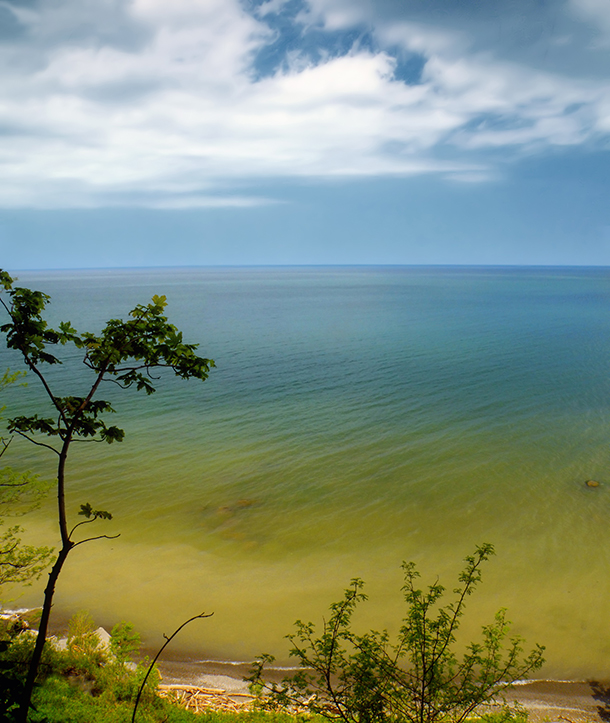
Algae blooms in Lake Erie are forecast to be severe once again this year. (Photo: Nicholas A. Tonelli, Flickr CC BY 2.0)
CURWOOD: I don't know, Peter, what?
DYKSTRA: Well there’s another warning on the same thing. The federal agency NOAA is predicting the algae bloom this year in Lake Eerie will be what they call "more severe" than normal.
CURWOOD: Well, you're full of such good news today, Peter. Peter Dykstra’s with DailyClimate.org and Environmental Health News, that’s EHN.org. Thanks a lot Peter, talk to you again real soon.
DYKSTRA: OK, Steve, sure we’ll talk to you soon.
CURWOOD: And there's more on these stories on our website, LOE.org.
Related links:
- The Washington Post: “A campaign to eliminate plastic straws is sucking in thousands of converts”
- The Guardian: “Quarter of England’s rivers at risk of running dry, finds WWF”
- WWF: UK Rivers and Chalk Streams
- Lake Erie’s Algae
[MUSIC: Pat Donohue, “Jazz Name” on Profile, Bluesky Records]
Airlines Embrace Carbon Fee
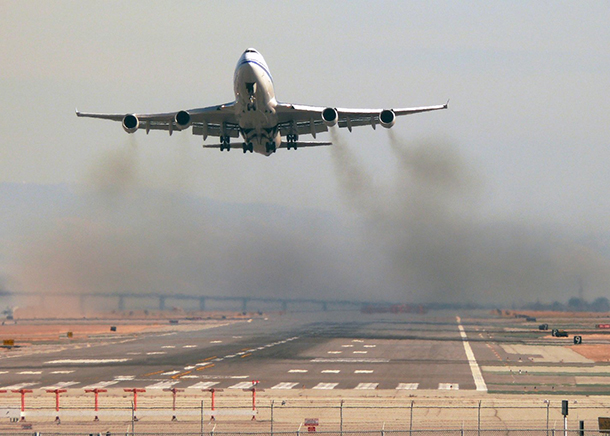
An AirChina Boeing 747 releases plumes of exhaust as it takes off out of San Francisco. According to Nancy Young, fuel is the number one cost for her organization’s constituent airlines and motivates them to reduce emissions. (Photo: dsleeter_2000, Flickr CC BY-NC 2.0)
CURWOOD: President Trump may have decided to pull the US out of the Paris Climate Agreement, but America’s airlines are still bound by a separate agreement that regulates global warming gases from international flights. The Carbon Offsets and Reduction Scheme for International Aviation, or CORSIA, was signed on October 6, 2016 at the UN and currently has the voluntary support of more than 70 nations, representing nearly 90 percent of international airline activity. The Trump Administration is reviewing the deal, but US air carriers say, pulling out would hurt competitiveness and raise costs.
Joining us today is Nancy Young. She’s the Vice President for Environmental Affairs of the US commercial aviation trade group, Airlines for America. Welcome to Living on Earth.
YOUNG: I'm delighted to be here. Thank you.
CURWOOD: So, I guess a basic problem with regulating carbon from aircraft is they take off perhaps in one country and land in another. So, who is responsible for the emissions? How did the negotiations resolve that problem?
YOUNG: It was a very key issue to be able to have an international body for the 191 countries come together with a single plan for how to address aviation and environmental issues exactly because we do take off in one country and land in another, and having a unilateral measure or a series of unilateral measures would be conflicting, duplicative, and actually counterproductive.

The International Civil Aviation Organization is a specialized agency of the United Nations that deals with the diplomacy of international aviation. Its headquarters are located in Montreal. (Photo: Caribb, Flickr CC BY-NC-ND 2.0)
CURWOOD: So, how is this airline carbon plan structured? What does each face this agreement entail and who is participating?
YOUNG: Well, it was agreed in October 2016 by virtually all 191 international civil aviation organization countries, but it was agreed as an opt-in system, so for the first several years, the first six years, it's an opt-in, voluntary system for the countries. 70 countries have signed up for those first six years, and then after that it becomes mandatory for the rest of the international civil aviation organization countries, all 191 of them, except for the least developed countries and those with very low levels of international aviation activity. The target that we have set is to achieve carbon neutral growth beyond 2020 and that is why from the beginning, actually, we support having the United States in the first six years, the voluntary period, and then into the mandatory period beyond that.
CURWOOD: So, how were these rules conceived, and who are the primary players in putting this together?
YOUNG: Well, the governments are the primary negotiators, but fortunately they also have observer organizations that are accredited, and the international airline association that we work with is an observer, and the environmental groups are also an observer, and, so, we were able to be essentially in the room for most of the discussions over the last many years, and I think that really helped cut through different views around the world when industry was supporting going forward with this deal.
CURWOOD: So, with regards to carbon regulation and aviation, what's the relationship between this agreement, this carbon offset and reduction scheme for international aviation, and the Paris Climate Agreement?
YOUNG: Well, the two agreements are very different. So, the Paris Agreement covers countries' domestic commitments in an array of sectors and really isn't very specific as to any sector. The international civil aviation organization agreement is very specific to international aviation, and it covers international flight, and, so, they're two separate agreement agreed by countries covering very different scope of activity.
CURWOOD: So, this carbon offset and reduction scheme for international aviation, CORSIA as you sometimes call it, what options does the United States have to pull out of it, the way that President Trump signaled he wanted to get out of the Paris Agreement?

Airlines for America represents many of the country’s largest airlines internationally, including United. Delta, however, separated from the organization in 2015. (Photo: Aero Icarus, Flickr CC BY-SA 2.0)
YOUNG: Well, we like to put it in the opposite way, really. Why should the United States remain in the CORSIA agreement? And one of the key reasons is that it is supported by the US airlines. Why do we support it? One, it helps us support our own climate goals, and, number two, if we didn't have a global agreement for aviation an climate change, when we fly from country to country, they could put unilateral measures on the various US airlines and basically tax and charge us to death. We think that should speak to this administration as a reason to go forward with this agreement.
CURWOOD: So, recently your organization and others stepped forward to say, “Hey things have changed with the Paris climate agreement, but we're sticking with this plan to manage emissions from airplanes and international travel.” What's the Trump administration saying? I understand they are reviewing it at this point.
YOUNG: So, far we continue to work very productively with the administration in the steps that are needed to implement this agreement. From an airline point of view, we think this agreement should speak to the objectives of this administration, to have business-smart, technology-smart, energy-smart solutions for addressing the challenges of industry and international competitiveness.
CURWOOD: What would it mean for the US or any country that decides down the road that they're out of this deal, that they want to withdraw?
YOUNG: Well, I think when you have a unified industry saying, “We want to be in this agreement,” in some ways it answers its own question. How will that industry meet its own goals if it is not part of this agreement, number one, and, number two, if airlines in particular countries are not subject to the agreement, then they face retaliation when they fly to other countries and that could be a real impediment to international commerce and aviation.

Nancy Young is the Vice President for Environmental Affairs with the national trade group Airlines for America. (Photo: Airlines for America)
CURWOOD: Nancy, what might industries in the US and around the world learn from the formation of this plan? In other words, what role in international carbon policy development might this template play in the future, do you think?
YOUNG: Well, the CORSIA agreement is the first international global market based measure that applies to any specific sector, and, so, that is a huge historic step, and we were able to reach that by having the airlines work together with the rest of our supply chain, the airframe manufacturers, the engine manufacturers, the airports, and then together we came to an agreement to meet our own goals.
Fuel is the US airlines number one cost in many years, so we're motivated economically to be fuel efficient and hence greenhouse gas emissions efficient. But this CORSIA agreement is, I will say, in some ways a backstop. We need to push technology, we need to push infrastructure, and we need to push on sustainable alternative aviation fuels, and I think that package together is really what the story is.
CURWOOD: Nancy Young is the Vice President for Environmental Affairs of the aviation trade group, Airlines for America. Nancy, thanks so much for taking the time.
YOUNG: Thanks for having me.
Related links:
- Reuters: “U.S. airlines affirm aviation emissions deal after Trump’s Paris pullout”
- International Civil Aviation Organization on CORSIA Agreement
- Air Transport Action Group on the signing of the CORSIA Agreement in October 2016
[MUSIC: Boston Pops/John Williams, “Fly Me To the Moon” on Night and Day: The Boston Pops Celebrate Frank Sinatra, by Bart Howard, Sony Classical]
Dikes, Floods and Adaptation
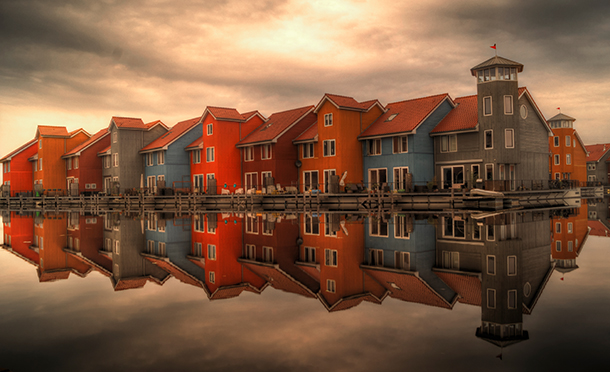
Much of the Netherlands is below sea level, with water always nearby. (Photo: Skitter Photo, StockSnap.io CC)
CURWOOD: As the planet continues to get warmer with more energetic rain cycles, floods and sea level rise, water management and urban resilience are related and growing concerns. Over the centuries, the Dutch have become famous for their system of dikes and serious approach to flooding, as only 50 percent of the Netherlands is more than a few feet above sea level. But even the Dutch were caught short by some crippling floods in the 1990s, and they quickly implemented vast flood prevention projects. And now they are training engineers around the world in how to adapt to the global warming risks of floods, torrential rains and storm surges.
Chris Zevenbergen is a Professor of Flood Resilience of Urban Systems at the IHE Delft Institute for Water Education in the Netherlands. He joined us on the line from Nanjing in China, where he is consulting.
ZEVENBERGEN: We have three types of threats. We have the storms from the sea and the storm surges, then we have the flood waves coming via our rivers, and then we have the floods caused by heavy rainfall.
CURWOOD: So, what do you do now to prepare for flooding? What's the approach?
ZEVENBERGEN: We, at the moment, we are in a transition. We had a strong belief that we could predict and control nature, and we're moving now into a period where we acknowledge that we cannot control nature. We have to deal with uncertainties in terms of climate change and socioeconomic development.

Many parks in the Netherlands also serve as reservoirs for storm water when there is heavy rain. (Photo: Bonnie Kittle, StockSnap.io CC)
CURWOOD: Now, I understand that you have a lot of parks and public spaces which you are now using as emergency reservoirs for flood water. Please talk about how you use that for flood management and flood resiliency in responding to, well, failures.
ZEVENBERGEN: Those examples you just mentioned, they are meant to deal with storm water, cloudbursts, and we see that a lot of cities in our country, they suffer from severe rainfall, and they have real problems with too much water during those heavy, heavy cloudbursts.
CURWOOD: What is the new thinking there in the Netherlands as to how to deal with massive flooding from rivers there?
ZEVENBERGEN: Now the new thinking as we started 10 years ago with the concept of room for the rivers, and room for the river is a paradigm shift. The old paradigm is confining rivers and building and strengthening the dikes along the rivers, but we decided to explore a new approach where we give more space to the water, where we allowed the river to expand when large volumes of water are entering our country. So, the room for the river concept is a turning point in our approach. It's not fighting against water. It is living with water.
CURWOOD: Well, what the storm surges from the ocean there? I mean, much of Netherlands is right there looking out at the sea?
ZEVENBERGEN: Yes, now, for the storm surges we have our flood defense systems, but that was in the old times our solution. Now, we are acknowledging that those systems may fail and that we should be prepared for failure, and one of the new actions we are currently taking is to prepare the Dutch population on these type of events, and so we are now much more aware about the risks than, say, 10 years ago.
CURWOOD: What do you do then to prepare for failure?
ZEVENBERGEN: Yeah, that is, we call it multi-level protection and the first level is our flood protection systems, the primary dike systems. The second level is, for instance, spatial planning. A large part of our country are low laying polders and exactly in those polders we have our big cities. So, we are now really considering to really dampen that development process in those low-laying areas. But also early warning, that we are really prepared when there is a real flood, that we know what to do. So, we call it protection, prevention, and preparedness.
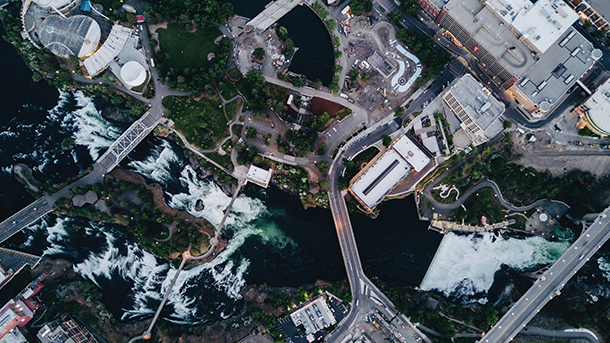
The Room for the River initiative is a paradigm shift. Rather than work to contain water, the Dutch are expanding rivers to live with water. (Photo: Fredo Mark, StockSnap.io CC)
CURWOOD: So, what is the flood protection standard there in Netherlands? What do you aspire to?
ZEVENBERGEN: Our flood protection is now one in 10,000 years. That means that the probability of failure is one in 10,000 years, and that's the most stringent system on this planet.
CURWOOD: Well, Chris, if I heard that number, I'd say, “What's there to worry about, then? The Netherlands must be fine.”
ZEVENBERGEN: Yes, although the probability of failure are low, the consequences are huge. Two-thirds of our economy is in those low-lying areas.
CURWOOD: Talk to me about the money here. In particular, what potential is there for the private sector to engage in this in a way that, well they can make money?
ZEVENBERGEN: The World Bank has estimated that investing in one dollar in flood protection will save $7 to $10 in flood damage. Now, what we see all around world is that on one hand is there is a lot of money available, on another hand there is demand for investments in flood protection. But for some reason there is an investment gap. So, the money cannot find the projects, and the projects cannot find the money, and the reason is that the capacity on the side of the water agencies and ministries is lacking to produce fundable investment proposals, on the one hand, and, on the other hand, we see that the financing sector lacks the knowledge regarding the water systems and flood protection systems. A few weeks ago there was a big conference of the OECD talking about specifically how to engage the finance sector and the water sector.
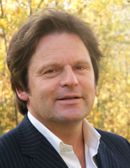
Chris Zevenbergen is Professor at the IHE Delft Institute for Water Education in the Netherlands.
(Photo: Courtesy of Chris Zevenbergen)
CURWOOD: What do you see as the greatest challenge that cities face in managing water systems in the face of climate change? What keeps you up at night?
ZEVENBERGEN: [LAUGHS] I see two types of challenges. Currently, I'm in China, and there are about, say, 600 really big cities, 10 million plus. All those cities, they have serious flood problems, and the flood damages there are really affecting the economy of China, but what I see is a big challenge in China. It is not the new built-up areas. Those cities will continue to expand. They will be constructed in a, what we call, “a water-sensitive way.” But what about the existing urban fabric, the existing cities? How to transform those cities in flood resiliency? I think that is a major challenge we are facing, and that will take in my view at least one generation to get it done, and another challenge I see in the small and medium-sized cities in Africa and Asia, those cities are rapidly growing but don't have the capacity to do that in a sustainable way and take into account the threats from the rivers and storm surges and rainfall.
CURWOOD: So, our studio is in Boston, Massachusetts, about 300 kilometers north of New York City. We both have harbors. What's your advice to cities like New York City and Boston about managing water systems in the face of climate change?
ZEVENBERGEN: Yeah, my advice would be, don't wait until the next flood disaster is coming to really have a serious look at your current situation and protection system. The Netherlands, we are not responding to flood disaster, but we are anticipating a flood disaster. That means that we have time to really see what is the best strategy for our country, and that is a process where we are involving all the different stakeholders, and it's a very time-consuming process, but I think we are there now. We are about to implement our new strategy, but it took 10 years to accomplish that.
CURWOOD: Chris Zevenbergen is Professor of Flood Resilience of Urban Systems at the IHE Delft Institute for Water Education in the Netherlands. Thank you so much for taking the time with us today, professor.
ZEVENBERGEN: OK, thank you very much.
Related links:
- Yale Environment 360: “To Control Floods, the Dutch Turn to Nature for Inspiration”
- Room for the River Initiative
- Delta Works website
- About Professor Chris Zevenebergen
[MUSIC: Peter Yarrow/Bethany Yarrow/Rufus Cappadocia, “Jimmy Crack Corn” on Puff the Magic Dragon, traditional American, self-released]
CURWOOD: Coming up...a novelist imagines what New York could be a century from now, under 50 feet of water. That’s just ahead here on Living on Earth. Stay tuned.
ANNOUNCER: Funding for Living on Earth comes from you our listeners, and United Technologies - combining passion for science with engineering to create solutions designed for sustainability in the aerospace, food refrigeration and building industries. UTC companies such as Otis, Carrier, Pratt & Whitney and UTC Aerospace Systems are helping to move the world forward.
This is PRI, Public Radio International.
[CUTAWAY MUSIC: Johnny Otis, “Harlem Nocturne” (single release) by Earle Hagen/Ray Noble, Savoy Records]
New York 2140
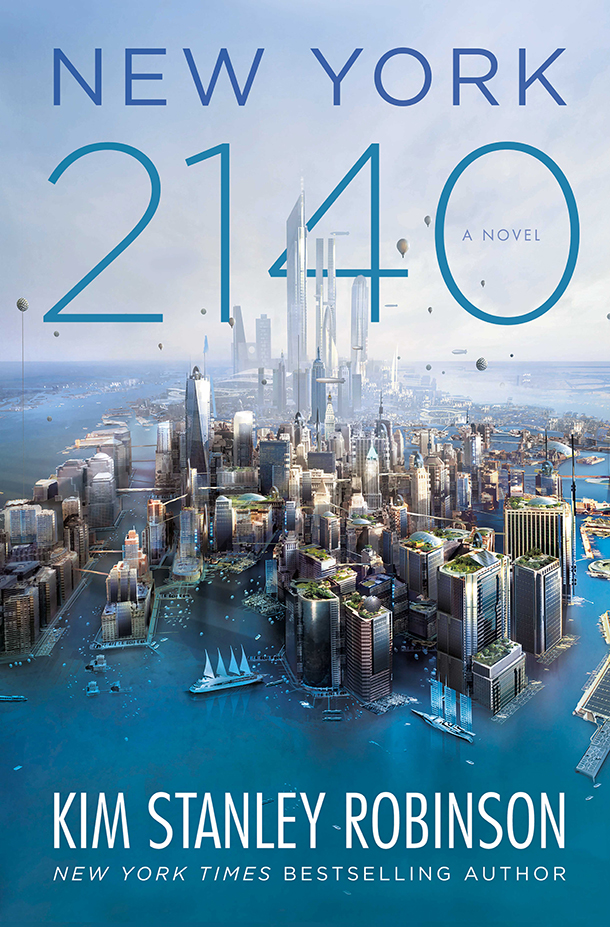
In New York 2140, author Kim Stanley Robinson envisions that sea levels have risen 50 feet, but New York is still a vibrant financial and cultural capital. (Photo: courtesy of ŒEllen B. Wright)
ROBINSON: In my novel, New York 2140, I postulate a fairly rapid and severe sea level rise in the next 120 years, and I postulated that the big slides in Antarctica would come in pulses so that for ten years there’d be very rapid rise and then for 30 years not much at all and then a second pulse comes that’s even worse than the first as things get hotter and wetter.
CURWOOD: Kim Stanley Robinson has won the Hugo, Nebula and World Fantasy Awards, and many of his science fiction books, such as the Mars Trilogy, deal with ecological themes. Kim Stanley Robinson spoke with Living on Earth’s Helen Palmer.
PALMER: Kim Stanley Robinson, please could you read for me from page 139, begins with the words "first pulse".
ROBINSON: Well, sure. The first pulse was a profound shock, as how could it not be, raising sea level by 10 feet in 10 years. That was already enough to disrupt coastlines everywhere, also to grossly inconvenience all the major shipping ports around the world and shipping is trade. Those containers and their millions had been circulating by way of diesel burning ships and trucks, moving around all the stuff people wanted, produced on one continent and consumed on another following the highest rate of return, which is the only rule that people observed at that time. So, that very disregard for the consequences of their carbon burn had unleashed the ice that caused the rise in sea level and wrecked the global distribution system and caused a depression that was even more damaging to the people of that generation, then the accompanying refugee crisis which using the unit popular at the time was rated at 50 Katrinas. So, yes, the first pulse was a first-order catastrophe and it got people's attention and changes were made. Sure, people stopped burning carbon much faster than they thought they could before the first pulse. Too late, of course. The global warming initiated before the first pulse was baked in by then and could not be stopped by anything the post-pulse people could do.
PALMER: Stan, it's a fairly grim vision of the drowned world humanity’s managed to create and could well be heading for. But, you paint a picture of a remarkably resilient New York City. How do you see people living in 2140?
ROBINSON: Well, it takes a novel to describe but in brief, catastrophes will be bad. They will disrupt lives around the world at the coastlines, and the coastlines are about where a fifth of humanity lives, but it's also where trade happens, as I pointed out in that passage, and the coastlines are just crucial to human civilization. But what my novel describes is the aftermath of that disruption, so it's a fine line I have to tread because I don't want to downplay the level of the disaster which will be world historical importance.
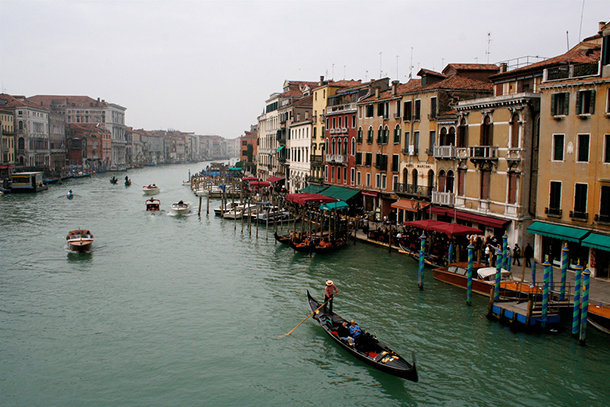
Kim Stanley Robinson’s fictional futuristic New York is like a “Super Venice” in which people get around by zooming up and down canals in boats. (Photo: John Anthony, Flickr CC BY-NC 2.0)
But afterwards, people are still going to be alive, there's going to be a lot of infrastructure that, even at the coastlines, although damaged, will still be there and people still love New York and there will still be young people who want to live their lives who are assuming this is the natural state of the world. So, my book is a comedy of coping, is really what it comes down to, describes the situation about 50 years after. What I want to do is try to attack the apocalyptic imagination; that when we cause climate change, it will simply be the end times and there will be zombies running on the streets that you'll have to shoot with machine guns. In a way that's too easy and it's also wrong.
PALMER: But I'm particularly entertained by the kind of scientific advances you see happening to make life in New York possible. I mean, for instance, the ability to live in these skyscrapers which for some reason have not collapsed due to new forms of cladding and new forms of waterproofing.
ROBINSON: Well, a lot of the skyscrapers in New York City and presumably around the world, but in Manhattan for sure, are footed in bedrock and they are concrete and steel and although living in sea water would be bad for them, it wouldn't be fatal for them. And then you’d have to start retrofitting. I do have some kind of near-future waterproofing method and some things in material science that we're right on the edge of already, graphenated composites and the like, that help them a lot in making this readjustment to becoming a super Venice.
PALMER: Well, in fact, you envision that, that the people are getting around by zooming up-and-down on what were the streets and the avenues now in their little boats because obviously the subway no longer works.
ROBINSON: That's right. There's Vaporettos as in Venice, big bus boats, ferries that move on a regular schedule through the canals. People get around also on sky bridges made of graphenated composites that link up above the sea levels. There's also the problems of the intertidal because Venice, New York Harbor has a tide that is 10 vertical feet from high tide to low tide and that is actually several blocks of midtown Manhattan that would be sloshing around and underwater at high tide but exposed at low tide, actually much more difficult to cope with than being underwater all the time. So, I tried to play the science fiction game which is you postulate one big change and then you try to play with the secondary and tertiary developments that would derive from that first big change.
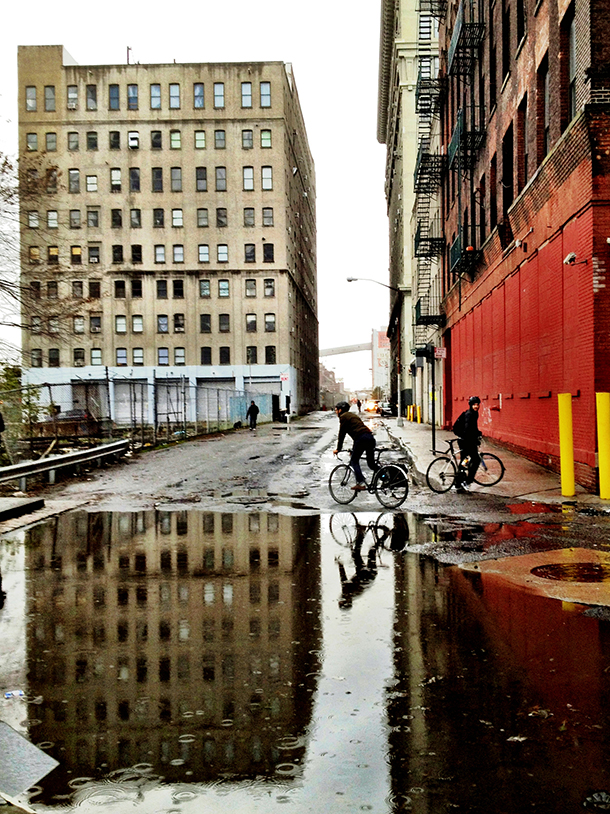
Storm surges in New York currently result in temporary rises in sea level that are nevertheless devastating, especially during severe storms like Hurricane Sandy, which soaked the city in 2012. (Photo: Erin Johnson, Flickr CC BY-NC 2.0)
PALMER: You must have done a huge amount of research to work out what would be underwater, what would be sometimes underwater, and what would be still high and dry land.
ROBINSON: Yes, that was a lot fun. I got the US Geological Survey topographical maps that overlay the contour intervals of the heights of the city area and then I visited New York with a tourist map version of that map in hand so that I could wander especially the intertidal and try to imagine what it would look like and then downtown from say the Empire State building down to the Battery would be underwater all the time. From about the Empire State building up to Central Park, or a little short of it would be the intertidal zone. That's a pretty big stretch of real estate that would be in the intertidal and what's interesting is that property law follows Roman law and nobody can own the intertidal in Roman law, and Western civilization has tended to follow that, and so it's a little bit funny in property terms, real estate, finance and financial derivatives and betting on sea level rise and betting on whether property values will go up or down.
PALMER: Well, yes, you imagine the power of the banks and hedge funds and international capital are still functioning. That was surprising to me because I thought, “Oh gosh, that system would have to collapse,” but you obviously suggest that no it wouldn't.
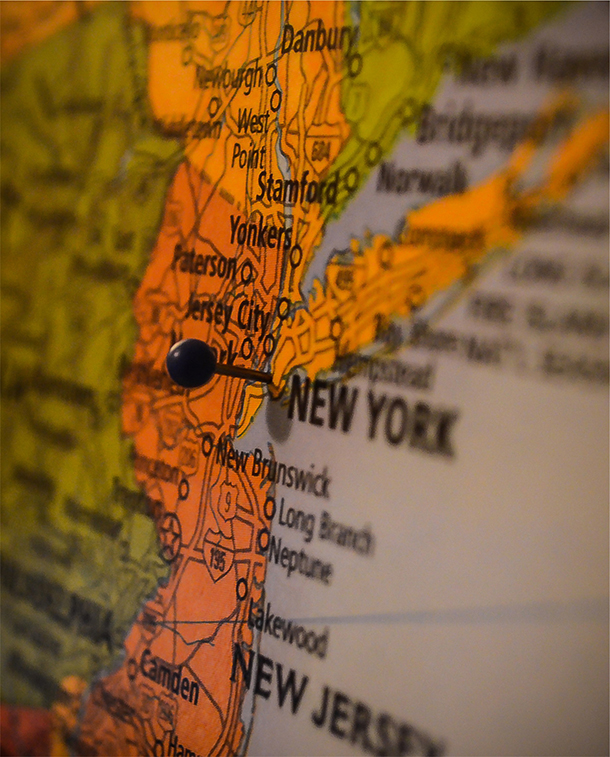
Storm surges in New York currently result in temporary rises in sea level that are nevertheless devastating, especially during severe storms like Hurricane Sandy, which soaked the city in 2012. (Photo: Erin Johnson, Flickr CC BY-NC 2.0)
ROBINSON: Well, it's a bit of a game I'm playing there were I want this novel to also examine the way that we use finance now and for sure finance preys on uses catastrophes to increase its leverage and to make profit. So, capital wants to be spent and so accumulated capital is not good and infrastructure and new infrastructure actually represents an opportunity rather than a catastrophy, or both at once.
PALMER: I like the fact that you posit this group of, what I would call “idealistic realists” who believe that there might be a different way of ordering society, a better way, and they are in basically the householders' union. Tell me about the householders' union.
ROBINSON: Sure, and this is an idea out of the some economists that I know who are basically doing political economy and they are pointing out that the way that people have power as against the oligarchies of big money are by way of unions, but the unions have been destroyed and there aren't that many plumbers in the plumbers' union. There's only so many teachers or truckers. The unions that still survive are fractionated amongst their interest groups of occupations, but everybody's a householder one way or another unless you're a homeless person and that's a different story but everybody either owns and pays mortgages or else they rent, so they all can be in a householders union and rents and mortgages are the ways in which banks keep their liquidity flowing. So these political economists are suggesting that people could engineer a crash any time they want to by withholding payments and doing a householder union fiscal noncompliance strike and then the banks would crash, they would run to the governments, and a plan would have to be in place to nationalize the banks. So, this is a relatively conservative and legal form of revolution in which you consider the governments to be your friends. The nation-state governments are the people's companies, so to speak, or the place where you believe are still of the people, by the people and for the people.
PALMER: Well, any piece of science fiction or maybe dystopia/utopia is a reflection of the world we actually live in. You've obviously reflected the world of inequality of the society that we've created in a very, I would say, creative way, in that you've envisioned a way that this inequality of our world could be repurposed. In that way, do you see it is utopian?
ROBINSON: Yes, I do and I would like to make sure that people understand utopia to mean a vision of a positive future history that's dynamic and changing, rather than a perfect end state, a society that doesn't have to change because everything is right, because utopian does mean pie-in-the-sky, never going to happen why would you suggest it, and since I've been doing it my whole career, I have to defend the other definition which is it's just trying to describe positive futures that we can then attempt to enact or ponder.

The Met building, towering over author Kim Stanley Robinson in this photo, is a hub for many of the characters in the novel. In this post-flood New York, buildings are like their own city states, housing hundreds of residents. (Photo: courtesy of ŒEllen B. Wright)
PALMER: Well, in fact, you posit this coming in the wake of a very bad hurricane that hits New York, Hurricane Fyodor. Describe to me what happens there and how that actually...what the fallout of Hurricane Fyodor is fact that triggers this turnaround for society.
ROBINSON: The New York estuary is weird and there have been hurricanes that have hit it in the past. They thrust an enormous lot of water into the bite of New York which is where Long Island meets New Jersey and what you've got is a situation where a storm surge be quite remarkable. The unnamed hurricane of 1893 had a storm surge of 30 feet and recently Hurricane Sandy, I've heard had a storm surge or something like 12 feet or 18 feet, so briefly you get sea level rise. So these aren't just waves. These are a rise in sea level that are temporary but devastating, and if you already have 50 feet of sea level rise as your norm, as your base normality, then a big hurricane and one of the things that people are talking about is superstorms coming out of climate change. A big hurricane hitting New York solid like Hurricane Sandy did would have the potential for a quite amazing storm surge and a lot of damage.
And then following that, then the people are saying, “Look, half of the apartments in New York are owned by millionaires from abroad and billionaires from abroad who are using them as safety deposit boxes for the safest way to store capital, and they can also visit the big city for a week every year and party,” but this is already true and what is interesting is I have my people demanding that these apartments be open up for the refugees to the hurricane or one of my more idealistic local politicians. Well, Jeremy Corbyn just did the very same thing in London after that apartment tower caught fire and made the same demand because London is in the same situation as New York as having a ton of great apartments that are there empty all the time because international financial oligarchs have enough money that they want to bank it by having an empty apartment in these great cities.
PALMER: Well, you have created a colorful cast of characters that inhabit the Met building. I mean, it's interesting you seem to imagine that in this post-pulse New York, there will be a shortage of living accommodation and in fact it's kind of like Russia after the revolution when suddenly these great buildings are taken over for a reasonable amount of money as opposed to just for a very few people.

New York 2140 critically evaluates the way the world uses finance currently. (Photo: CommScope, Flick CC BY-NC-ND 2.0)
ROBINSON: Well, thank you, and I'm glad that you mention that because I did take a Soviet model especially during World War II where they just jammed people in and really it was a matter of cooperate or die, and living became communal in a way that is sometimes regarded as an imposition, but other times is regarded as a liberation from nuclear family isolation and alienation, and then you might have a different kind of culture, more communal, more like Mondragon’s Spain, and the idea would be that hegemony and the notion that we need to follow the economic capitalist model they’re in right now, that would be shattered by the flood and I'm imagining every building would be almost a city-state of its own, and at the same time that you might still have the state and the federal governments overseeing things in different ways.
PALMER: One interesting thread in your book is this air ship, the Assisted Migration actually takes endangered animals from one place and relocates them somewhere more appropriate for them. Talk to me about the Assisted Migration.
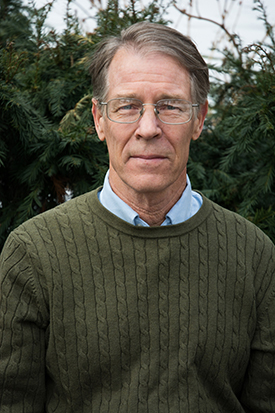
Kim Stanley Robinson has won the Hugo, Nebula and World Fantasy awards. Many of his novels deal with questions of ecological sustainability. (Photo: courtesy of ŒEllen B. Wright)
ROBINSON: Assisted migration is an idea out of population biology right now because climate change is going to create an extinction situation for many species and they're all important for the biosphere to be healthy as a whole. But there's something serious going on here, that we need habitat corridors, that wildlife needs to be able to freely move and mostly latitudinally to get to the areas where they can survive when climate change hammers their home biome. So, they're talking about, could we move like reseeding palm trees a little bit further north in Florida, do we have the power to this, do we have the right to do this and what would be the ramifications and effects of it? It's a really interesting and labor intensive project, so this notion that jobs are going to go away and that robots are going to take over everything and humans will have nothing to do is a ridiculous misunderstanding of the situation because landscape restoration’s labor intensive and so is taking care of young people and old people. It's a misreading of the opportunity that I find a little painful as you can probably tell.
PALMER: What role do you see fiction having in the future when we indeed have so many problems that really do need to be overcome?
ROBINSON: Well, I love fiction and it's really my religion. It's my way that I make meaning out of the world and I think that's what it's for. It tries to tell the stories give the big picture of what things mean because science is great as it is in explaining of how the world works. It is not in the business of saying what human life means. That just isn't what it's about. What science fiction is saying is, “Well this could happen, it would be interesting if it did, and let's put you there for a few hours whilst you're reading it,” and then when you come back home to this world, you can think, wow, what can we do to get to that positive future or what can we do to avoid that negative future.
CURWOOD: Kim Stanley Robinson’s book is New York 2140. He spoke with Living on Earth’s Helen Palmer.
Related links:
- New York 2140 by Kim Stanley Robinson
- The Guardian: Review of New York 2140: “An urgent vision of the future”
- The New Yorker: “Kim Stanley Robinson’s Latest Novel Imagines Life In An Underwater New York”
- About Kim Stanley Robinson
BirdNote: The Ruby-throated Hummingbird

Male Ruby-throated Hummingbirds have a brilliant iridescent red throat. (Photo: Tibor Nagy)
BIRDNOTE®/ AUDUBON AND HUMMING BIRDS
[MUSIC - BIRDNOTE® THEME]
CURWOOD: John James Audubon was a master at capturing the images of exotic birds. And as Michael Stein explains in today’s Birdnote, sometimes his methods were rather sneaky.
http://birdnote.org/show/audubon-and-ruby-throat
BirdNote®
Audubon and the Ruby-throated Hummingbird
[Sounds of Ruby-throated Hummingbird]
STEIN: Have you ever watched a hummingbird, hovering as it sips from blossoms filled with nectar?
Early explorers to the New World were fascinated with these tiny iridescent jewels. Strictly birds of the Americas, hummingbirds don’t exist in the Old World.
John James Audubon, the French naturalist who spent his adult life studying and painting the birds of North America, described them as a “glittering fragment of the rainbow.” The only hummingbird species that Audubon observed in nature was this Ruby-throated Hummingbird, a summer visitor to eastern North America.
[More Ruby-throated Hummingbird sounds]
The symbiotic relationship of hummingbirds with the flowers from which they feed—and in turn pollinate—was clearly understood by Audubon. He noted in his journal how the birds “advance on fairy wings, carefully visiting every opening flower cup.”

A female Ruby-throated Hummingbird. (Photo: Mark Moschell)
In order to study and paint these exquisite creatures, Audubon abandoned his otherwise effective method of obtaining birds — namely, shooting them — and instead poured sweetened wine into the chalices of flowers. The innocent hummingbirds drank and fell intoxicated to the ground, allowing Audubon to carefully observe their every feather.
[More Ruby-throated Hummingbird sounds]
###
Written by Frances Wood
Sounds of the Ruby-throated Hummingbird provided by The Macaulay Library of Natural Sounds at the Cornell Lab of Ornithology, Ithaca, New York. Recorded by G.A. Keller.
Ambient track recorded by C. Peterson
Producer: John Kessler
Executive Producer: Chris Peterson
© 2010-2017 Tune In to Nature.org June 2017
Audubon’s account: http://www.audubon.org/bird/BoA/F24_G1c.html
http://birdnote.org/show/audubon-and-ruby-throat
CURWOOD: For some photos, buzz on over to our website LOE.org.
Related link:
The story about Audubon and on Ruby-throat the BirdNote® website
[MUSIC: Nat ‘King” Cole, “Just You, Just Me”, Capitol Records 1956
After Midnight The Complete Session (Bonus Tracks)]
CURWOOD: Living on Earth is produced by the World Media Foundation. Our crew includes Naomi Arenberg, Bobby Bascomb, Savannah Christiansen, Jenni Doering, Matt Hoisch, Noble Ingram, Jaime Kaiser, Don Lyman, Lizz Malloy, Alex Metzger, Helen Palmer, Adelaide Chen, Olivia Reardon and Jolanda Omari. And we welcome a new intern, Rebecca Riedelmeier, this week. Tom Tiger engineered our show, with help from Jeff Wade/John Jessoe and Jake Rego. Alison Lirish Dean composed our themes. You can find us anytime at LOE.org - and like us, please, on our Facebook page - it’s PRI’s Living on Earth. And we tweet from @LivingonEarth. I'm Steve Curwood. Thanks for listening.
ANNOUNCER1: Funding for Living on Earth comes you, our listeners, and from the University of Massachusetts, Boston, in association with its School for the Environment, developing the next generation of environmental leaders. And from the Grantham Foundation for the protection of the environment, supporting strategic communications and collaboration in solving the world’s most pressing environmental problems. Support also comes from the Energy Foundation, serving the public interest by helping to build a strong, clean, energy economy, from Carl and Judy Ferenbach of Boston, Massachusetts and from SolarCity, America’s solar power provider. SolarCity is dedicated to revolutionizing the way energy is delivered by giving customers a renewable alternative to fossil fuels. Information at 888-997-1703. That’s 888-997-1703.
ANNOUNCER2: PRI. Public Radio International.
Living on Earth wants to hear from you!
Living on Earth
62 Calef Highway, Suite 212
Lee, NH 03861
Telephone: 617-287-4121
E-mail: comments@loe.org
Newsletter [Click here]
Donate to Living on Earth!
Living on Earth is an independent media program and relies entirely on contributions from listeners and institutions supporting public service. Please donate now to preserve an independent environmental voice.
NewsletterLiving on Earth offers a weekly delivery of the show's rundown to your mailbox. Sign up for our newsletter today!
 Sailors For The Sea: Be the change you want to sea.
Sailors For The Sea: Be the change you want to sea.
 The Grantham Foundation for the Protection of the Environment: Committed to protecting and improving the health of the global environment.
The Grantham Foundation for the Protection of the Environment: Committed to protecting and improving the health of the global environment.
 Contribute to Living on Earth and receive, as our gift to you, an archival print of one of Mark Seth Lender's extraordinary wildlife photographs. Follow the link to see Mark's current collection of photographs.
Contribute to Living on Earth and receive, as our gift to you, an archival print of one of Mark Seth Lender's extraordinary wildlife photographs. Follow the link to see Mark's current collection of photographs.
 Buy a signed copy of Mark Seth Lender's book Smeagull the Seagull & support Living on Earth
Buy a signed copy of Mark Seth Lender's book Smeagull the Seagull & support Living on Earth

